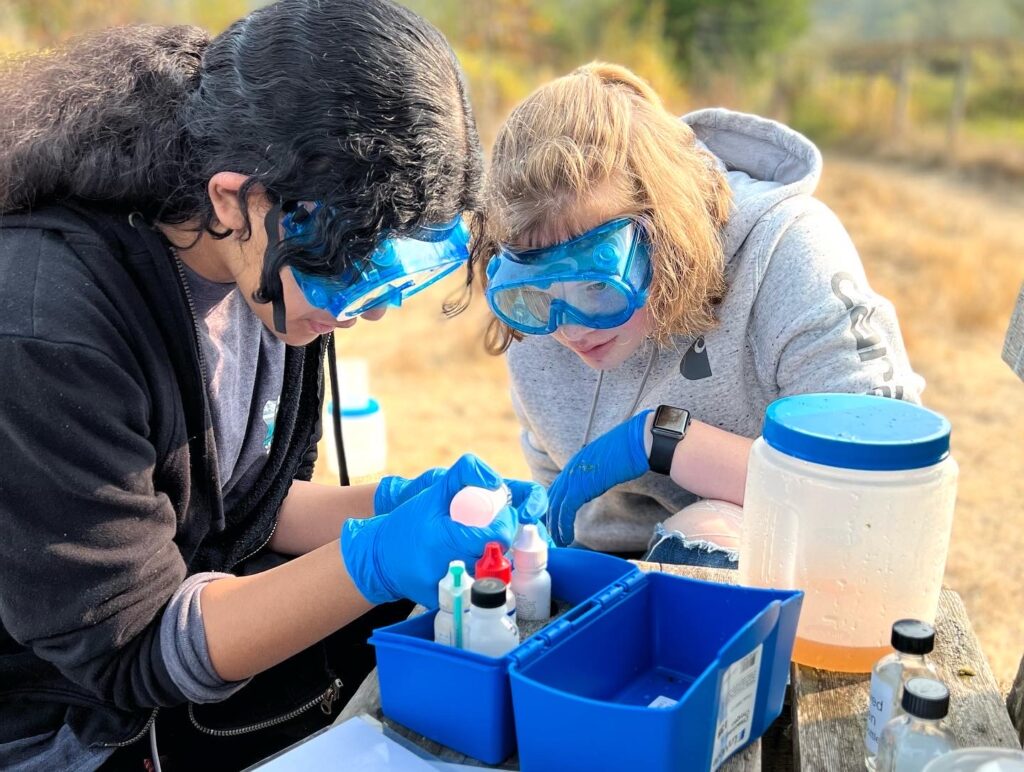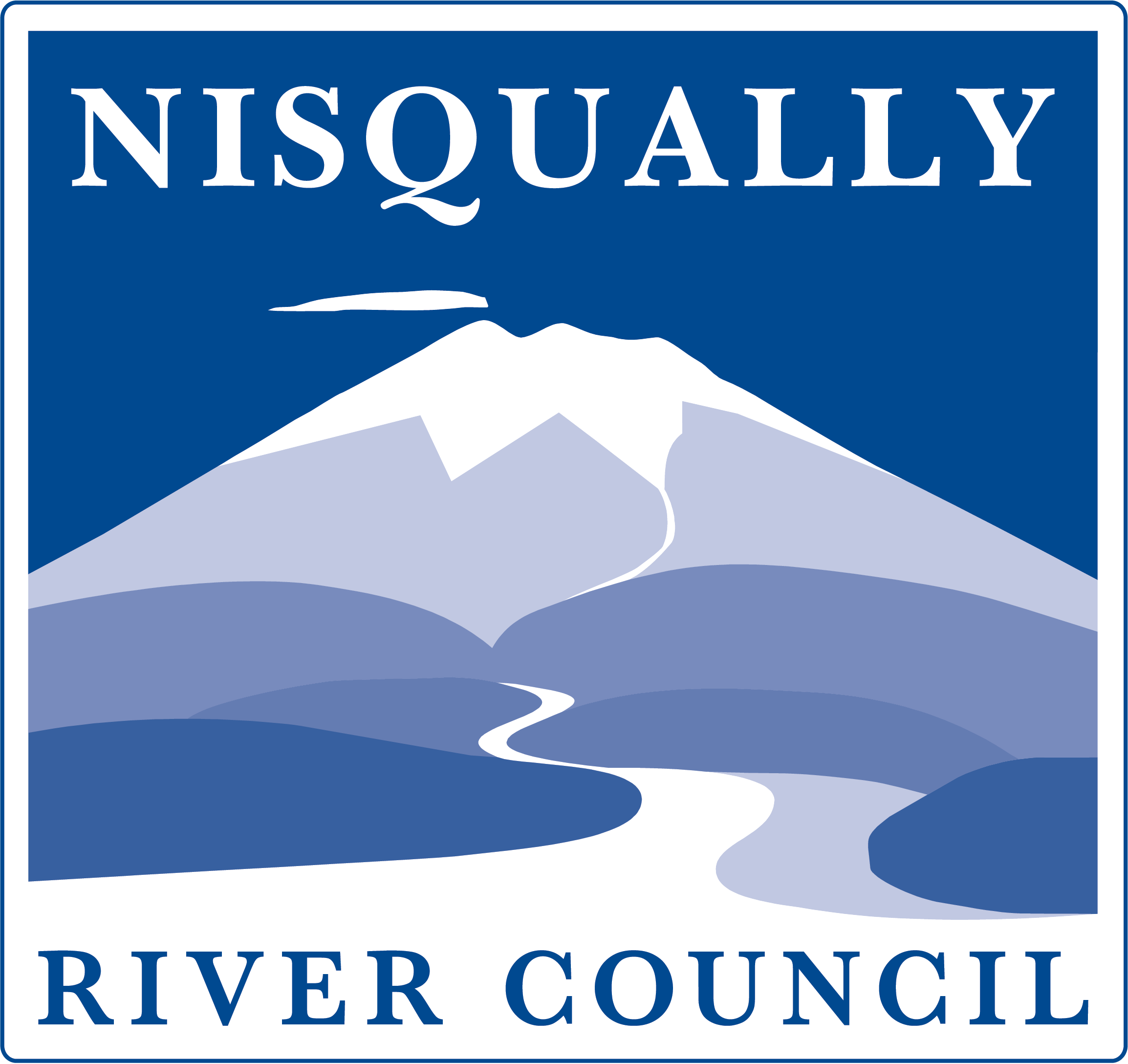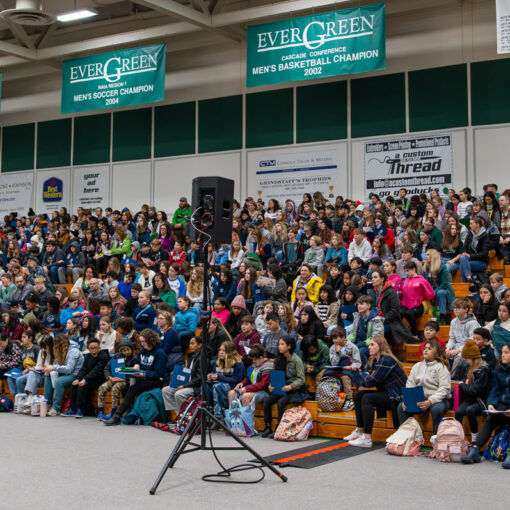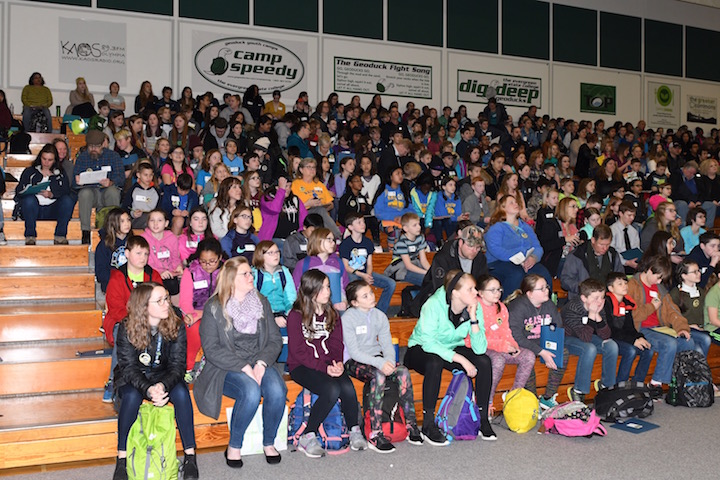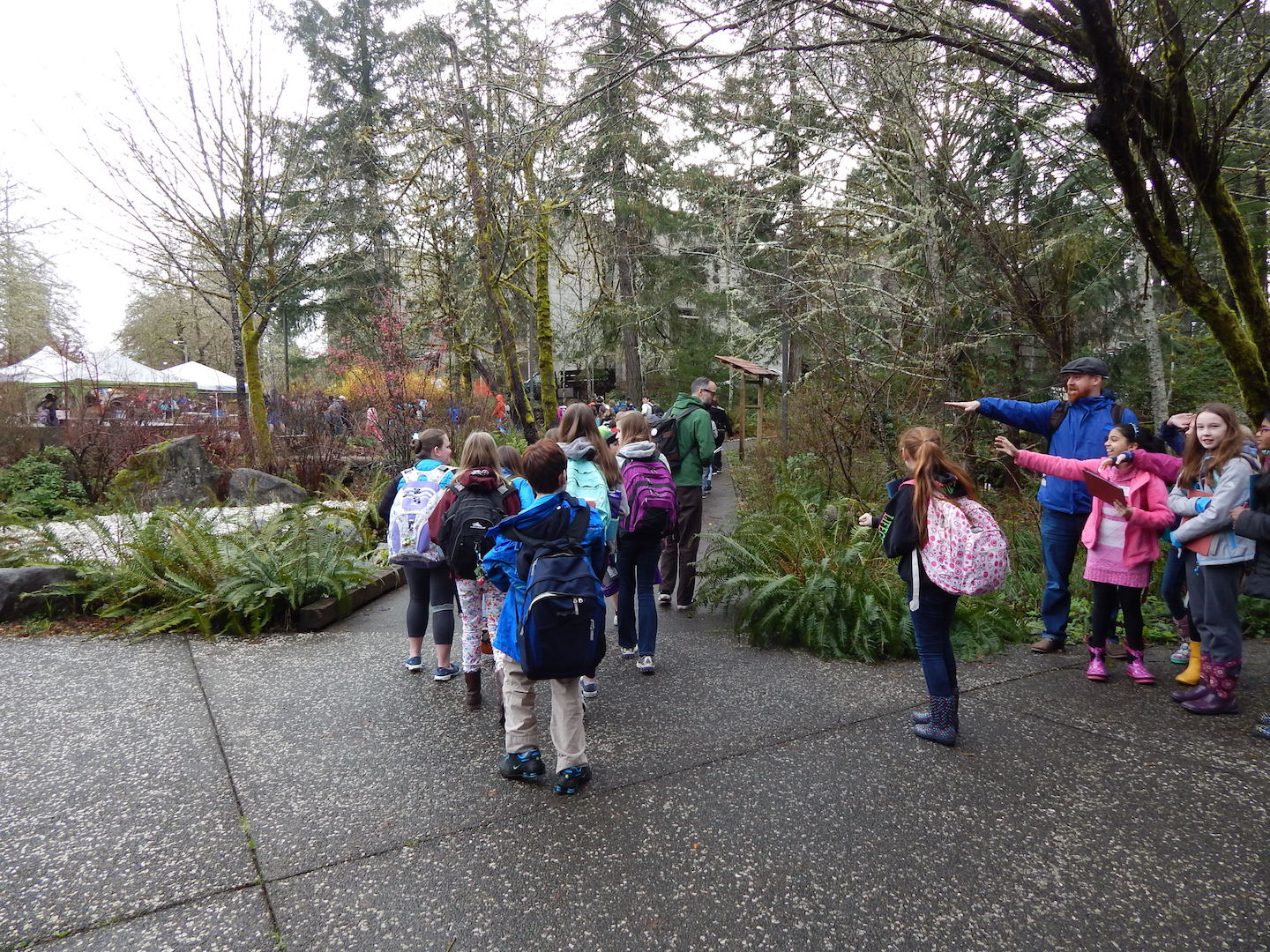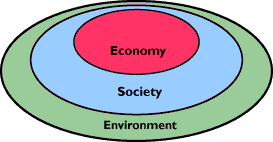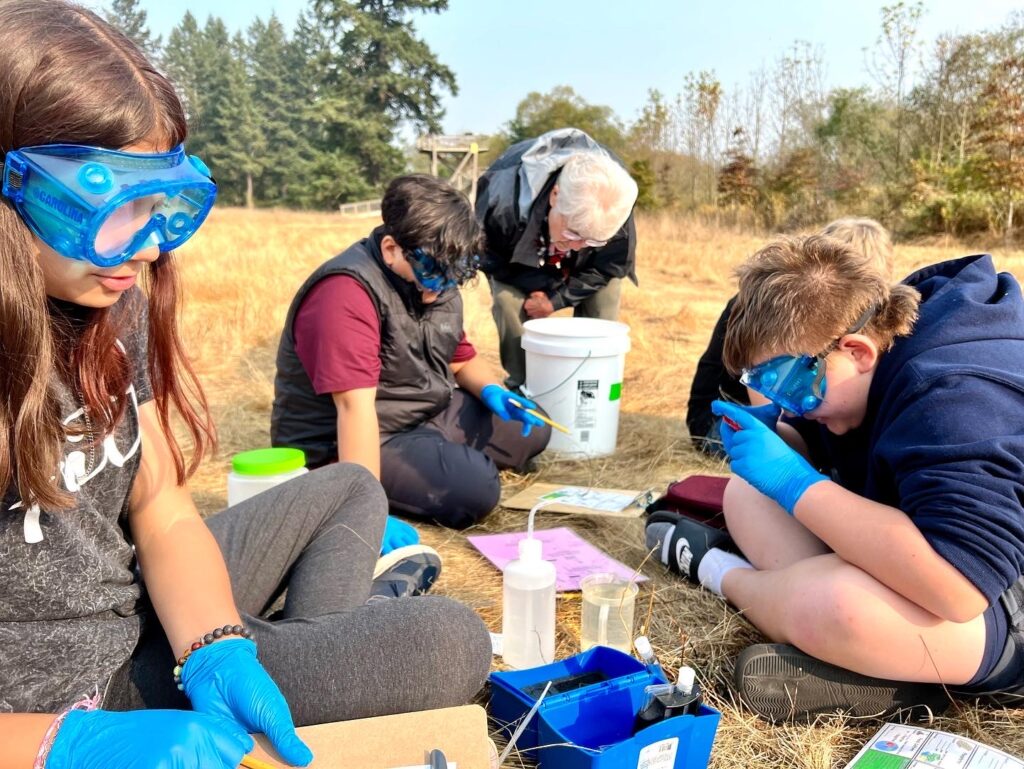
While visiting an elementary school in Lacey, WA for a salmon dissection, our staff was treated to an amazing sight! We have worked with students from this school several times prior, including taking them out to the Nisqually River to monitor the health of the river by testing the pH, dissolved oxygen, and several other parameters, and taking them out to the banks of the river to plant trees to stabilize its banks. While the students were still at recess, the teacher brought us over to the classroom wall where students had constructed a complex web of photos, news articles, handmade posters and drawings, questions and answers, and handwritten notes. At the center of the web was a letter written by the Nisqually Indian Tribe’s Tribal Council, opposing a massive local development project that would have a negative environmental impact, particularly on the Nisqually River and its salmon population. The teacher had gone over the letter with the students and prompted them to think critically about the letter and the proposed development.
Students came up with incredible connections to the restoration work and monitoring they had done with our staff; photos from their field trips featured prominently on the web. Students had brainstormed impacts from the proposed development, and had specifically called out the impacts to the water’s dissolved oxygen, pH, and the other parameters they had measured on their field trip. Students also began asking important questions, such as “Why should we listen to the Tribe’s opinion?” and “What are the impacts of colonization on the tribe?” (And the follow-up: “Is this proposed development a form of continued colonization?” as it would be partially on tribal land), “What is activism? Is the planting and monitoring that we did considered activism?”. There were drawings of Billy Frank Jr., (local tribal activist and leader), posters about Indian boarding schools and their impact, and collections of index cards with students’ questions about the Medicine Creek Treaty. Incredibly, there was even a news article about another field trip the students had done the year before with our program, to the Nisqually Indian Tribe’s Culture Center, where students had learned about aspects of the Tribe’s culture and heard stories from Tribal members.
It was incredible to see the students connecting and synthesizing so much information about the Earth and our place in it, and it was amazing to see the role we had played in facilitating their experience. The students were becoming thoughtful environmental stewards and thinking critically about relevant social and environmental issues in their own backyard, all thanks to their incredible teacher and their own experiences in the outdoors during their field trips.
